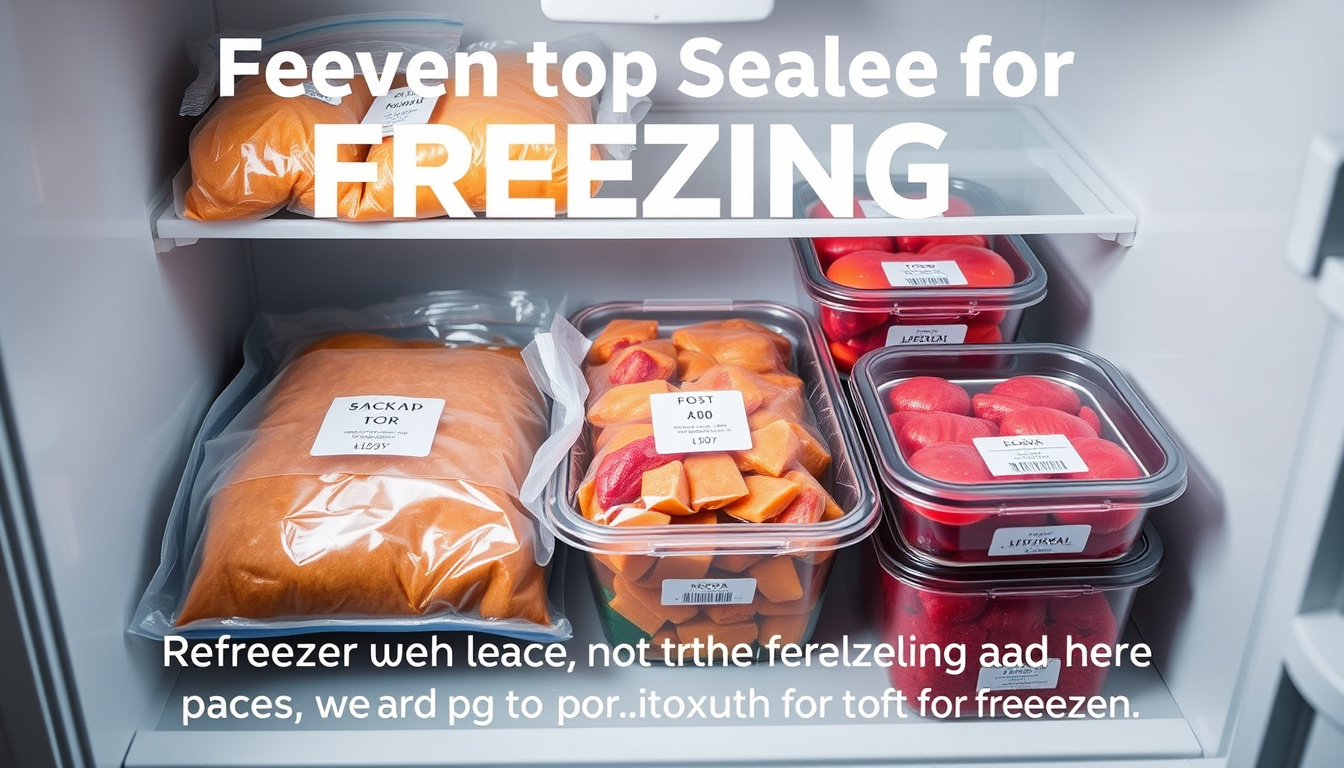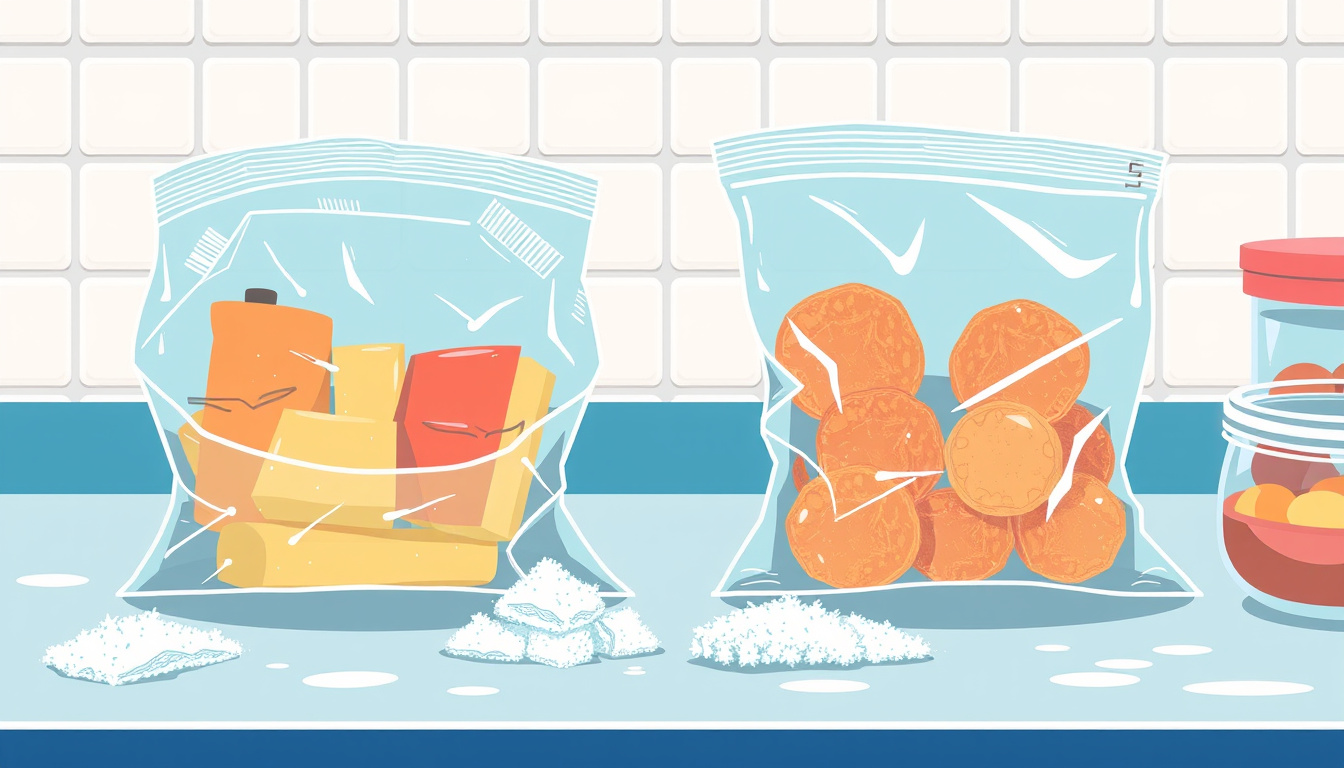Freezing is a popular and effective method for preserving processed foods, allowing consumers to store items for extended periods without immediate spoilage. However, a crucial aspect often overlooked is the importance of proper packaging—specifically, never freezing processed foods in unsealed packages. This practice may seem inconsequential, but it carries hidden risks that can compromise food quality, safety, and enjoyment. This article explores why sealing your packages before freezing processed foods is essential and how doing so ensures the longevity and safety of your frozen goods.
Understanding the Freezing Process and Its Effects on Food
Freezing slows down microbial growth and enzymatic activity, which are primarily responsible for food spoilage. Unlike canning or cooking methods, freezing does not sterilize food but rather puts spoilage pathways on pause. The quality and safety of frozen foods depend heavily on how well they are protected during freezing, especially from exposure to air and moisture.
Role of Packaging in Freezing Quality
Proper packaging acts as a barrier that protects frozen foods from air and moisture exposure. 
The main purposes of packaging for frozen foods include:
- Preventing moisture loss and dehydration
- Limiting air contact to avoid oxidation and flavor changes
- Maintaining texture and preserving flavor
- Blocking off-flavors and odors from other foods in the freezer
- Shielding food from mechanical damage in the freezer
When packages are unsealed, these protective functions fail, resulting in several negative outcomes.
The Consequences of Freezing Processed Foods in Unsealed Packages
1. Freezer Burn
One of the most visible and common issues caused by unsealed packaging is freezer burn. This condition manifests as dry, grayish-brown, or leathery patches on the food surface. It happens because moisture evaporates from the food and freezes on the package walls or inside the freezer.
While freezer burn does not make food unsafe to eat, it drastically reduces quality — making food tough, dry, and less flavorful. Over time, it causes an undesirable change in texture, leaving processed foods like frozen pizzas or ready meals less enjoyable or nearly inedible after cooking.
2. Quality Degradation (Flavor and Texture Loss)
Exposure to air allows oxygen to interact with food, leading to oxidation. Oxidation can:
- Deteriorate flavors, causing stale or off-tastes
- Promote color changes and the breakdown of fats, leading to rancidity
- Alter texture, making some foods mushy or tough
Processed foods, which often contain delicate herbs, spices, or sauces, are particularly susceptible to these changes when left exposed in unsealed packages.
3. Contamination and Odor Transfer
An open package compromises the food’s defense against odors and contaminants. Freezers often contain various foods, each with distinct smells. Unsealed processed foods can absorb unpleasant odors from other items, negatively affecting their taste and smell.
Additionally, exposure increases the theoretical risk of contamination by other airborne particles within the freezer, though the cold environment slows microbial growth.
4. Increased Ice Crystal Formation and Frosting
When processed foods are exposed to open air in the freezer, moisture fluctuates on their surface, encouraging excessive ice crystal formation. Large ice crystals damage the cellular structure of food, resulting in texture loss upon thawing or cooking. Frost buildup inside unsealed packages, as experienced with many frozen multipacks like pizzas or snacks, is a direct result of this moisture transfer and air exposure.
Best Practices for Freezing Processed Foods to Avoid These Issues
To preserve the optimal quality and safety of your processed foods, follow these expert guidelines:
Seal the Package Properly
- Always reseal opened packages tightly using freezer-safe methods: zipper bags, heat sealing, freezer tape, or airtight containers.
- Press out as much air as possible from flexible bags before sealing.
- If the original packaging is damaged or inadequate, transfer food into high-quality freezer bags or rigid containers designed to be moisture- and vapor-resistant.
Use Appropriate Packaging Materials
- Use materials labeled for freezer use. These should be moisture and vapor-resistant, durable at low temperatures, leakproof, and food-grade.
- Avoid using ordinary waxed paper or milk cartons for long-term freezing.
- For liquids or foods with sauces, ensure packaging allows for expansion to prevent bursting.
Maintain Consistent Freezer Temperatures
- Keep your freezer at 0°F (-18°C) or below to ensure proper food preservation.
- Rapid freezing is better for small ice crystal formation and quality retention.
Limit Exposure During Defrosting and Handling
- Minimize the time packages spend open in the freezer.
- When removing food, reseal packages promptly.
- Use a freezer inventory system to rotate and consume food before quality deteriorates.
Conclusion
Freezing processed foods can effectively extend their shelf life and convenience, but only when done with proper care regarding packaging. Freezing in unsealed packages leads to freezer burn, flavor and texture loss, odor contamination, and frost buildup, all of which reduce the quality and enjoyment of your food. Investing a little extra effort in sealing and protecting your frozen processed foods safeguards your investment and keeps your meals delicious and safe for longer periods. Always remember: proper packaging is the first step to successful freezing.
>> Chest Freezer Reviews <<
>> Upright Freezer Reviews <<

